Last updated on October 15th, 2023 by Alex Praytor

For coffee fans, a cup of coffee is not just a want, but a need. Some call it an addiction, but others call it a way of life.
If you want to dive further into the dark side and bright side of coffee, we’ve put together a list of coffee statistics to whet your appetite.

Find out which type of coffee is the best-tasting, the most popular, the most expensive, and the highest in caffeine. Plus, you can learn a myriad of other interesting stats about the coffee market.
By the end, you may have some new drinks to add to your bucket list. Or, you may decide to take a job in Finland where bosses are required to give you coffee breaks at work!
Let’s look at some of the most interesting coffee facts and stats for this year.
- Coffee Stats for 2022
- #1. The U.S. imports almost 90% of its coffee.
- #2. Brazil, Vietnam, and Colombia are the top three producers of coffee worldwide.
- #3. Finland has the largest coffee consumption per person.
- #4. The U.S. is the country with the largest overall consumption of coffee.
- #5. Most Americans choose coffee over tea.
- #6. On average, women spend more than men on coffee each year.
- #7. Coffee contains more caffeine than black or green tea.
- #8. Coffee beans are not actually beans.
- #9. Coffee is a source of soluble fiber.
- #10. Many coffee drinkers choose to drink coffee away from home.
- #11. Yemen was the first country to start brewing coffee.
- #12. Coffee may contain health properties.
- #13. The most expensive type of coffee is processed through poop.
- #14. More coffee drinkers choose arabica coffee beans over robusta beans.
- #15. Drip machines are still the most popular at-home brewing method.
- #16. Cappuccinos and lattes are the most popular specialty coffee drinks in the U.S.
- #17. Most coffee drinkers don’t drink their coffee black.
- #18. Starbucks is the biggest coffee chain worldwide.
- #19. A morning breakfast is the most popular time for coffee drinking.
- #20. Starbucks serves sixty million customers a week.
- #21. Millennials spend more on coffee than other demographics.
- #22. Ordering coffee through an app is becoming a common practice.
- #23. The popularity of coffee shops continues to grow.
- Final Thoughts
- FAQs
- References and further reading:
Coffee Stats for 2022
#1. The U.S. imports almost 90% of its coffee.
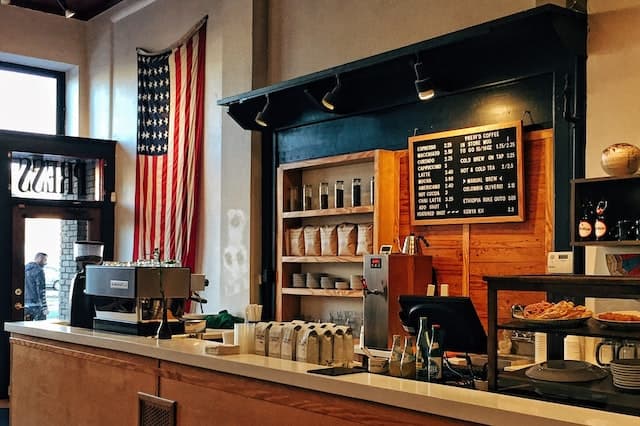
Photo by Ian Baldwin
The U.S. is a top consumer of coffee. However, only Hawaii, California, and the U.S. territory, Puerto Rico, currently produce coffee. According to World Atlas, Americans mostly rely on other countries for their coffee supply. Almost 90% of the coffee we drink in the U.S. is imported.
#2. Brazil, Vietnam, and Colombia are the top three producers of coffee worldwide.
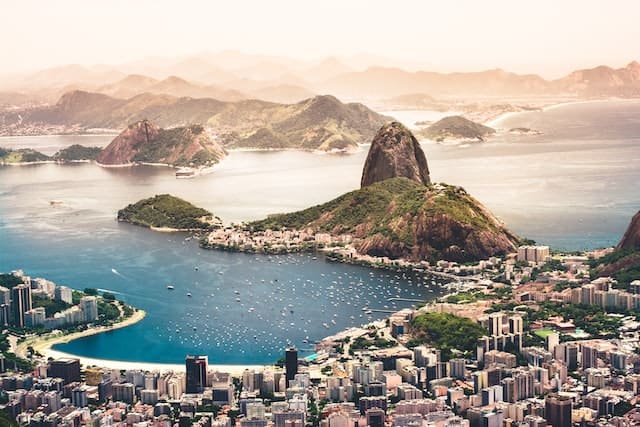
Photo by Agustin Diaz Gargiulo
The U.S. may not be a big producer of coffee beans, however, Brazil is! Out of the 175.35 million bags of coffee produced around the world every year, Brazil contributes 40%.
Vietnam and Colombia are the second and third-largest coffee producers in the world market. However, neither country’s coffee crop comes close to Brazil’s output.
#3. Finland has the largest coffee consumption per person.

Photo by Tapio Haaja
While the U.S. takes the cake for consuming the most coffee as a country, Finland gets credit for the largest coffee consumption per capita. The average coffee drinker in Finland drinks almost four cups of coffee per day. Finns even have two coffee breaks as part of their workday. Most Americans drink a little over 3 cups per day. The U.S ranks at #25 when looking at how many cups of coffee the average American drinks per day.
#4. The U.S. is the country with the largest overall consumption of coffee.
Americans may not drink as much coffee per person as coffee drinkers in other nations. However, according to a 2022 report by World Population Review, the U.S. is still the top coffee consumer worldwide.
The National Coffee Association estimates that Americans consume 517 million cups of coffee every day. Also, recent fiscal reports show that approximately 3.3 billion pounds of coffee per year are consumed in the U.S. alone.
#5. Most Americans choose coffee over tea.

Photo by Tyler Nix
When it comes to the battle between coffee and tea, coffee wins the most popular award in the U.S. According to the National Coffee Data Trends report, sixty-six percent of Americans drink coffee daily, while only 48% choose tea. With only 38% drinking soft drinks every day, coffee is the clear winner among Americans.
#6. On average, women spend more than men on coffee each year.
In a poll of over 1000 people, the average woman admitted to spending $2,327 on coffee per year. The men in the survey spent an average of $1,934 per person per year. Also, a higher percentage of women drink a daily cup of coffee. Sixty-six percent of women drink coffee every day versus 62% of men.
#7. Coffee contains more caffeine than black or green tea.
On average, coffee is higher in caffeine than black or even green tea. According to the FDA, an 8-ounce cup of coffee generally contains 80 to 100 milligrams of caffeine. Green tea and black tea contain almost half that amount with 30 to 50 mg of caffeine.
#8. Coffee beans are not actually beans.

Photo by Rodrigo Flores
We hear a lot about coffee beans in the coffee industry. But, technically, they don’t classify as beans at all. The coffee bean is really the seed of a coffee cherry. Producers dry and roast them to produce coffee. However, if you left it unprocessed, you could plant the “bean” and grow a new plant.
#9. Coffee is a source of soluble fiber.
Adults need 25 to 35 grams of fiber per day according to the American Dietetic Association. However, the average adult struggles to get in even 15 grams per day.
A recent study reveals that coffee can count toward your daily dose of fiber. The Scientific American states that an eight-ounce cup of coffee may contain up to 1.5 grams of fiber. If the average American drinks three or more cups a day, the fiber can add up quickly.
#10. Many coffee drinkers choose to drink coffee away from home.
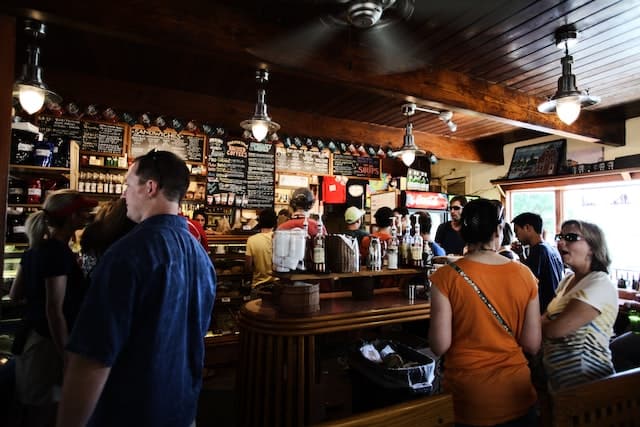
Photo by Dogancan Ozturan
Just because we can brew our own beans at home doesn’t always mean that we do. The National Coffee Data Trends recently looked at how often consumers choose to pick up a coffee drink away from home.
The study found that at least 33% of past-week coffee consumers choose to buy coffee outside the home at least four times a week. Fifty-six percent buy one to three cups of coffee per week.
#11. Yemen was the first country to start brewing coffee.
According to legend, monks as early as 800 AD discovered coffee beans and began chewing them for energy. However, actual evidence for coffee drinking comes much later.
According to most historians, Yemen was the first country to start roasting and brewing coffee similar to how we drink it today. Evidence shows that coffee was used religiously in Sufi shrines in Yemen as early as the mid-1400s.
#12. Coffee may contain health properties.

Photo by Brigitte Tohm
Black coffee has zero calories, making it a guilt-free treat even on a diet. But besides being a fairly innocuous vice, studies indicate that coffee may have health benefits.
Coffee contains polyphenols, which may have positive effects on the body. Polyphenols can reduce the risk of many diseases and create healthy bacteria.
Experts also note that coffee may reduce the risk of heart disease, type 2 diabetes, and some cancers. However, surpassing the daily caffeine allowance can negatively affect the body. Moderation is key.
#13. The most expensive type of coffee is processed through poop.
Black ivory coffee can sell for over $500 a pound or $50 a cup. Black ivory comes from coffee beans found in an elephant’s dung. While that may not sound inspiring, those who have tried it say this coffee has a smooth taste with notes of chocolate, malt, spice, and no bitterness. It is so expensive because the beans are difficult and time-consuming to process.
Other coffees, such as kopi luwak, bird poop coffee, and bat poop coffee, are also processed through animal feces. These coffees can also cost hundreds of dollars per pound.

#14. More coffee drinkers choose arabica coffee beans over robusta beans.
There are two main coffee types grown worldwide: arabica and robusta. However, 70% of coffee drinkers prefer arabica, while only 30% of consumers drink robusta beans. Many prefer Arabica for its smooth, sweet flavors and lack of bitterness.
Robusta often gets a bad rap for having harsh, bitter flavors. You may lessen the bitterness with egg shells, but many describe it as “rubbery.” However, robusta beans tend to be higher in antioxidants and contain considerably more caffeine than arabica. Also, Italians prefer robusta for espresso because these beans make a superior layer of crema.
#15. Drip machines are still the most popular at-home brewing method.
In 1972, drip coffee makers began replacing percolators in homes across the U.S. Today, many machines and brew methods are available for making coffee at home. However, old habits die hard.
According to recent reports,
- 41% of at-home coffee drinkers still choose a drip machine as their main coffee-making method.
- Single-serve machines are the second most popular choice, cornering 27% of the market.
- Cold brew tags behind with only 9% who prefer this method.
- Espresso machines come in fourth place with 8% of the market.
#16. Cappuccinos and lattes are the most popular specialty coffee drinks in the U.S.

Photo by Nathan Dumlao
Over 50% of Americans enjoy drinking at least one specialty coffee drink per day. Out of all the specialty items on the menu, cappuccinos have been the longstanding favorite. However, according to the National Coffee Association, the latte now ties with the cappuccino for first place. These two drinks are currently responsible for 33% of all espresso drinks.
#17. Most coffee drinkers don’t drink their coffee black.
Many love to drink coffee because it gives them energy for the day and tastes delicious. However, most coffee lovers agree that adding a little cream, sugar, (or both) enhances a cup of coffee. Only 35% of consumers drink their coffee black.
#18. Starbucks is the biggest coffee chain worldwide.

Photo by TR
Starbucks is the biggest coffee shop chain in the world. The coffee giant has over 15,000 stores in the U.S. and more than 30,000 locations globally. You can find at least one Starbucks store in every U.S. state. However, Starbucks wasn’t always the leader in the coffee world that it is today.
The first Starbucks store opened in 1971. For years, they only sold coffee beans roasted by Peet’s. A decade after opening its doors, Starbucks began roasting their own beans and selling coffee drinks to consumers.
Now, coffee consumers can’t get enough of Starbucks’ Caramel Macchiatos, Frappuccinos, and Pumpkin Spice Lattes, among other coffee drinks.
#19. A morning breakfast is the most popular time for coffee drinking.
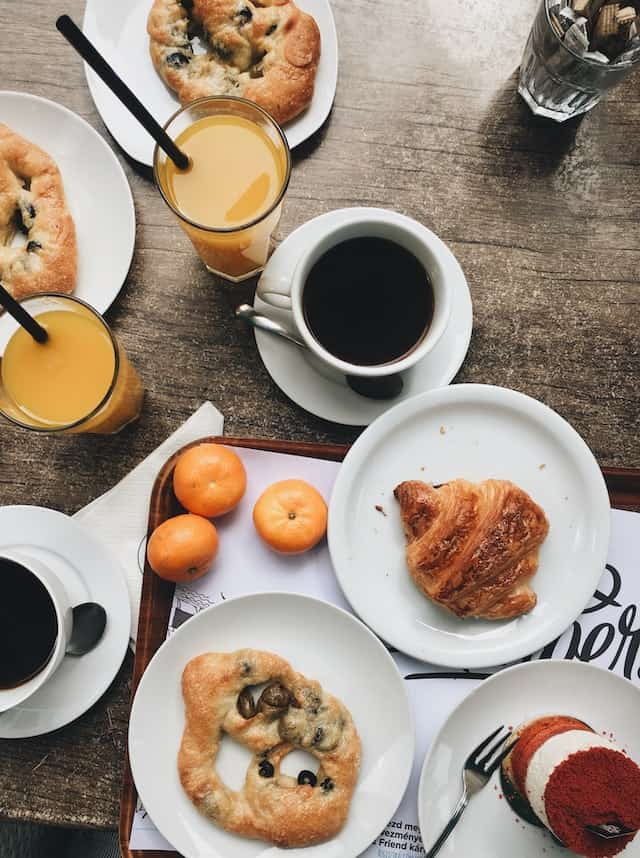
Photo by João Marcelo Martins
At least 65% of Americans point to breakfast as their favorite time to drink coffee. This timing may also be the best time from a health perspective. Many health experts believe that drinking coffee with a meal can prevent spikes in blood sugar and cortisol levels.
#20. Starbucks serves sixty million customers a week.
Starbucks estimates that it sells about 4 million coffee drinks every day. If you break down the estimate by store, it equals about 15,000 coffee drinks per store per day. Sixty million customers show up every week at Starbucks for a caffeine or non-caffeine fix.
#21. Millennials spend more on coffee than other demographics.

Photo by Joshua Rodriguez
When you look at coffee drinkers by age range, statistics show that:
- Millennials spend the most on coffee with an average of $2,008 per year.
- Following closely behind are the 35 to 44 year old, who spend $1,410 on coffee each year.
- College students tend to spend $93 per month on coffee drinks.
- Ironically, coffee drinkers ages 60 and up drink more coffee than other demographics, but somehow tend to spend much less on their drinks.
#22. Ordering coffee through an app is becoming a common practice.
Coffee drinkers have become more technically savvy in the way they place their coffee orders in recent years. The National Coffee Association reports that as many as 34% of coffee consumers use an app to order their favorite drink.
#23. The popularity of coffee shops continues to grow.
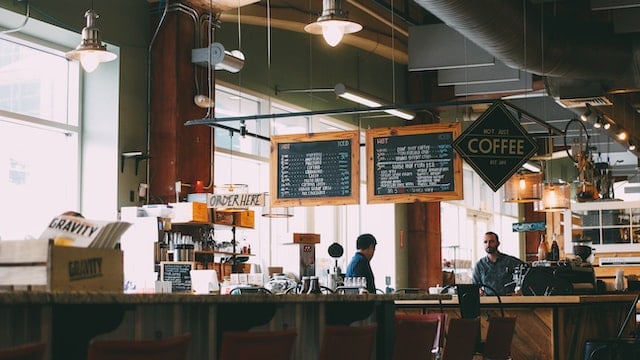
Photo by Jazmin Quaynor
In the past five years, coffee shops have seen a steady growth of 2.8% per year on average. Business experts expect the coffee shop industry to continue to grow at the same rate this year, as well.
Final Thoughts
Coffee drinkers have been enjoying this dark, caffeinated brew for 100s of years. From recent statistics, the coffee fan club continues to go strong. The U.S. is currently the top consumer of coffee beans around the world. However, many nations take their coffee just as seriously (or, perhaps, even more so).
Whether your preference is espresso, drip coffee, iced coffee, lattes, cappuccinos, or another type, statistics show us that coffee is a well-loved beverage worldwide.
Let us know which coffee fact surprises you the most!
FAQs
How much coffee is safe to drink per day?
The FDA’s recommended caffeine allowance for the average healthy person is 400 milligrams of caffeine per day. This breaks down to about four or five cups of coffee. However, the FDA encourages expectant mothers to go off coffee or at least limit their intake to 200 mg of caffeine per day.
How much does the average cup of coffee cost in 2022?
The price of coffee continues to increase. Last year, the average cost of a coffee drink at a coffee shop cost $4.03. However, according to The Wall Street Journal, the average price is now at $4.90.
What factors negatively impact the growth of the Coffee & Snack Shops industry in the US?
The Coffee and Snack Shops industry is large and continues to grow. However, there are some possible setbacks for those who wish to enter this market.
On the one hand, this niche is easy to enter as upfront costs are much lower than in other industries.
However, the market is already flooded so competition is high. Plus the price of base commodities like coffee are increasing due to current inflationary pressures, supply chain disruptions continue to persist, and a rising interest rate environment increases business credit risk.
References and further reading:
- Statista
- Visual Capitalist https://www.visualcapitalist.com/worlds-top-coffee-producing-countries/
- World Population Review https://worldpopulationreview.com/country-rankings/coffee-consumption-by-country
- National Coffee Association
- National Coffee Data Trends https://www.ncausa.org/Research-Trends/Market-Research/NCDT#pricing
- Early Bird by Amerisleep https://amerisleep.com/blog/caffeine-kick/
- U.S. Food and Drug Administration https://www.fda.gov/consumers/consumer-updates/spilling-beans-how-much-caffeine-too-much
- Scientific American https://www.scientificamerican.com/article/need-fiber-have-some-coff/
- Wikipedia https://en.wikipedia.org/wiki/Coffee
- Harvard Health Publishing, Harvard Medical School https://www.health.harvard.edu/staying-healthy/moderate-amounts-of-coffee-are-the-best
- Finances Online https://financesonline.com/top-10-most-expensive-coffee-in-the-world-luwak-coffee-is-not-the-no-1/#Black
- Hayman Finest World Coffee, London https://www.haymancoffee.com/blogs/coffee-blog/arabica-coffee-vs-robusta-coffee-and-other-gourmet-coffee-questions
- PRNewsire https://www.prnewswire.com/
- Insider
- History Link.org https://www.historylink.org/file/20292
- Coffee Affection https://coffeeaffection.com/coffee-consumption-statistics/#10_65_of_coffee_drinkers_prefer_to_enjoy_a_cup_with_their_breakfast
- Education Data Initiative https://educationdata.org/average-monthly-food-spend-college-student
- IBIS World https://www.ibisworld.com/industry-statistics/market-size/coffee-snack-shops-united-states/
Coffee Has Never Read This Good!
Sign up for a FREE newsletter to the best home brewing tips and guides
Thank you for subscribing to The Cup Coffee House Crew! There's a surprise in your Inbox 🙂
Something went wrong.
- About the Author
- Latest Posts
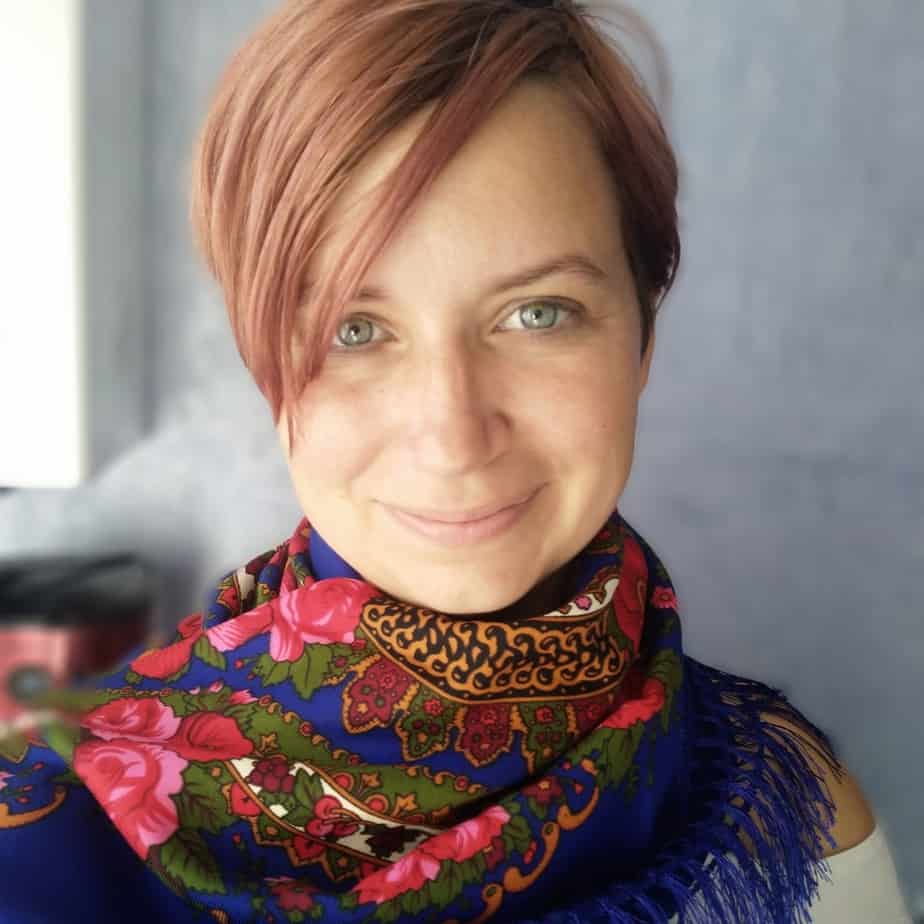
Alex Praytor worked her first job as a barista, finished college, and then took a tour to the other side of the globe. She fell in love with espresso and her would-be husband in Europe. She spends her spare time visiting native Texas landmarks, ancient castles, and all the coffee shops she finds along the way. At home, she is a mom, ESL teacher, and writer, who hones her coffee-making skills daily. She enjoys passing on her coffee findings to fellow caffeine addicts in search of the perfect cup.

